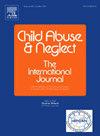家访提供者对促进家庭登记和继续参与的内部因素的看法
IF 3.4
2区 心理学
Q1 FAMILY STUDIES
引用次数: 0
摘要
家访是一项以证据为基础的服务,旨在减少虐待和忽视儿童,同时为家长提供信息和资源。尽管有强有力的经验证据表明家访的好处,但大多数符合条件的家庭在提供服务时并不登记,而那些登记的家庭往往在完成全部访问之前就退出了。目的从医疗服务提供者的角度拓展对家访项目登记和持续参与的认识。参与者和设置提供者(N = 19)来自俄克拉何马州三个联邦资助的家访项目。方法采用跨模型协作和数据共享(MODS)框架进行定性访谈,重点关注尚未被广泛考虑的内部状态的三个方面:(1)对兼容性或契合度的感知,(2)对变革的准备程度,以及(3)对实现结果的能力的信心。结果家访计划通常被认为与父母对孩子的目标高度一致,但其他基本需求和优先事项(例如,工作,食品不安全)可能使他们不参加或继续参加服务。此外,虽然父母通常会积极地做出改变,以更好地支持孩子的发展,但他们可能会在讨论深刻的个人话题时犹豫不决(例如,药物使用,家庭暴力)。研究结果强调了考虑家庭如何看待他们与家访的兼容性,他们是否准备好改变,以及他们对自己取得积极成果的能力有多大信心的重要性。此外,研究结果表明,家访提供者和项目在与家庭互动时可以采用策略。本文章由计算机程序翻译,如有差异,请以英文原文为准。
Perspectives of home visiting providers on internal factors that promote enrollment and continued participation for families
Background
Home visiting is an evidence-based service to reduce child abuse and neglect while providing parental information and resources. Despite strong empirical evidence for the benefits of home visiting, most eligible families do not enroll in services when offered and those who do enroll tend to drop out before completing the full dosage of visits.
Objective
To expand our understanding of enrollment and continued participation in home visiting programs from the perspective of providers.
Participants and setting
Providers (N = 19) from three federally funded home visiting programs in Oklahoma participated.
Methods
Qualitative interviews were developed using the Cross-Model Collaboration and Data Sharing (MODS) framework and focused on three aspects of internal states that have not been extensively considered: (1) perception of compatibility or fit, (2) readiness for change, and (3) confidence in ability to achieve outcomes.
Results
Home visiting programs were generally perceived to be highly compatible with parents' goals for their children, but other basic needs and priorities (e.g., work, food insecurity) may keep them from enrolling or continuing in services. Additionally, while parents are generally motivated to make changes that better support their child's development, they may be hesitant to discuss deeply personal topics (e.g., substance use, violence in the home).
Conclusions
Findings highlight the importance of considering how families view their compatibility with home visiting, how ready they are to change, and how confident they are in their ability to achieve positive outcomes. Moreover, findings indicate strategies home visiting providers and programs can employ when interacting with families.
求助全文
通过发布文献求助,成功后即可免费获取论文全文。
去求助
来源期刊

Child Abuse & Neglect
Multiple-
CiteScore
7.40
自引率
10.40%
发文量
397
期刊介绍:
Official Publication of the International Society for Prevention of Child Abuse and Neglect. Child Abuse & Neglect The International Journal, provides an international, multidisciplinary forum on all aspects of child abuse and neglect, with special emphasis on prevention and treatment; the scope extends further to all those aspects of life which either favor or hinder child development. While contributions will primarily be from the fields of psychology, psychiatry, social work, medicine, nursing, law enforcement, legislature, education, and anthropology, the Journal encourages the concerned lay individual and child-oriented advocate organizations to contribute.
 求助内容:
求助内容: 应助结果提醒方式:
应助结果提醒方式:


